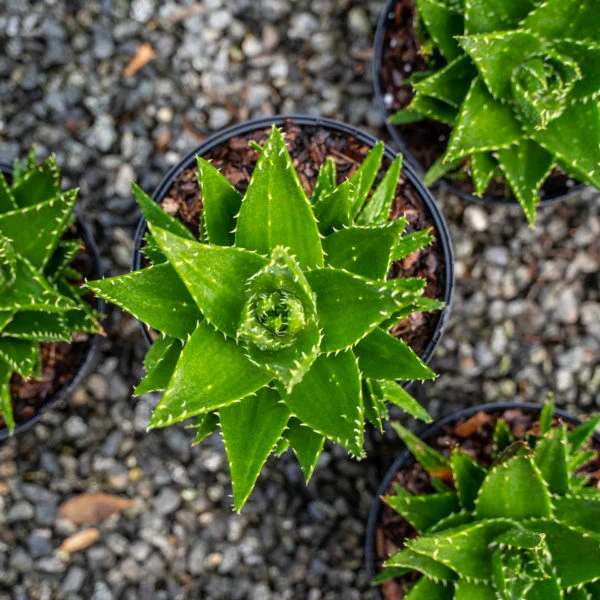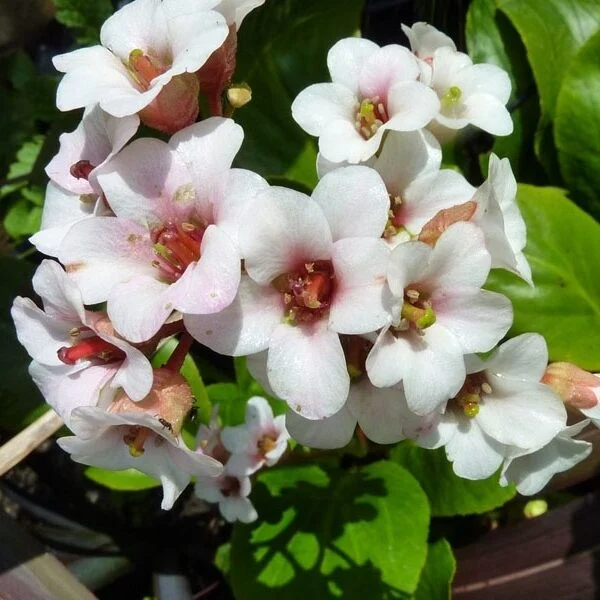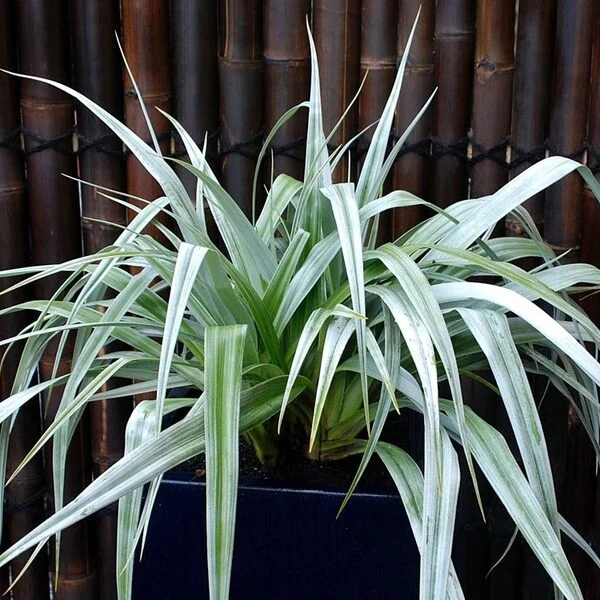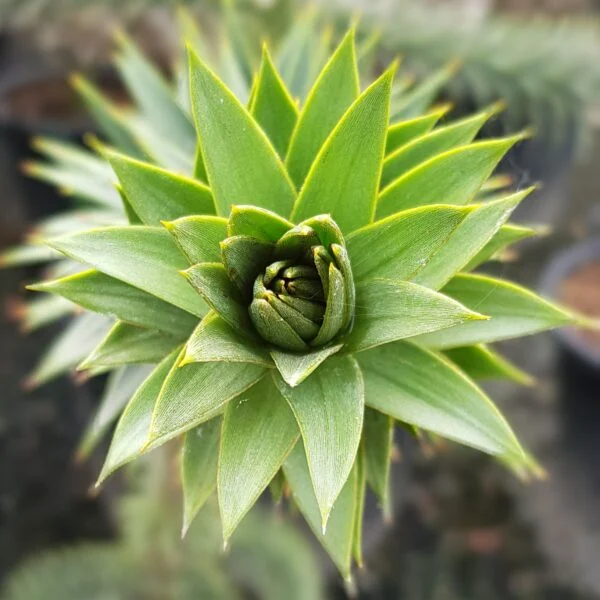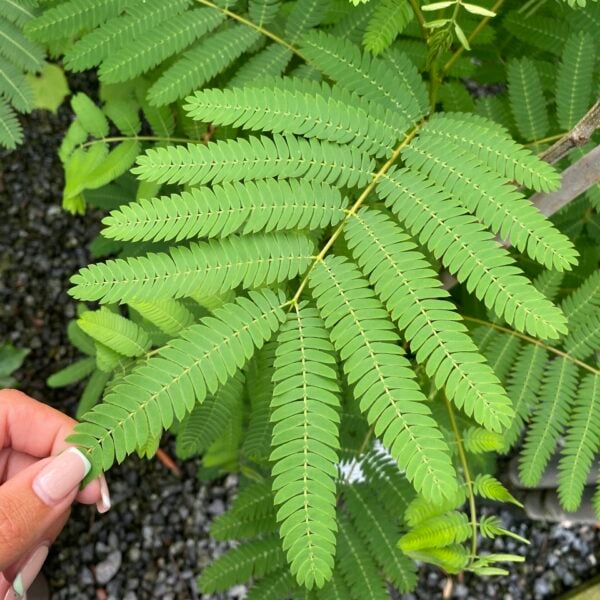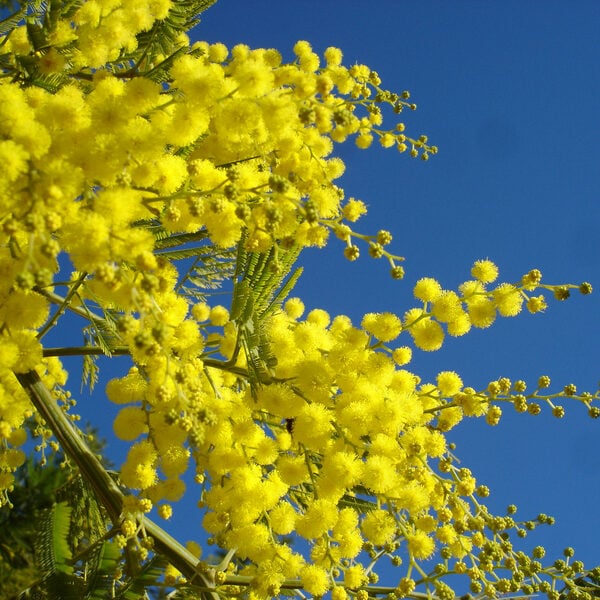Ensete ventricosum . (The Red Inset or Ethiopian Banana)
£144.00 incl. VAT
The most exotic thing you’ve ever seen. A huge Banana relative with red leaves. For the garden in summer and the greenhouse in winter. Can reach 8ft tall or more.

Hardiness level Red
We're not entirely sure that anyone knows what the correct name for this plant is but we call it the red leafed version ('Maurellii') of Ensete ventricosum. This is native to the Ethiopean Uplands (implausibly, growing at altitudes up to 12,000 ft near the Equator) and in their language is known as 'Inset' - a provider of masses of carbohydrate from the pummeled base of the trunk. A staple part of their diet much as potatoes and rice are in other parts of the world.
The leaves are green with a red margin but the backs of the leaves are red so the general aspect of the plant is red. Deep red with a bit of green hidden in there somewhere.
This version, though impressive is very much more controllable in size than the Inset itself but give it a good sized pot and it will reward you well with summer growth. If, as a result of being unable to keep it warm in winter, you need to cut all the leaves off in the spring, expect it to produce masses of its remarkable red leaves quite quickly - providing it's in a big pot (the biggest possible), has plenty of water ONCE it begins to grow (but not before, they hate boggy roots) and plenty of plant food. Plants can reach 8ft tall and 6ft wide and sometimes more. As with all banana-y plants, you could swipe it with a large sharp knife quite low down and it will just grow out again. Do your swiping in the spring, not the autumn.
It's got tough leaves and therefore doesn't mind a bit of wind in the garden but try to keep it at a minimum of 5 degrees centigrade in winter and restrict the amount of water. As with all Bananas and their relatives, they can survive for long periods with little water if the temperature is low.
Additional Information |
|
|---|---|
| Size | 20L (H62cm-2.2m, W1.1-2.5m) G28-40cm, 55L (H62cm-2.2m, W1.1-2.5m) G28-40cm |
| Soil Type | |
| Light | |
| Plant Type | |
| Continent of Origin | |
| Specialist Plants | |
| Situation | Coastal, Mild City Gardens, Plants for Pots, Sheltered Garden |
| Hardiness | |
FAQs
How fast does Ensete ventricosum (Musa) grow?
Give it a good sized pot and it will reward you well with summer growth. As with all banana-y plants, you could swipe it with a large sharp knife quite low down and it will just grow out again.
If, as a result of being unable to keep it warm in winter, you need to cut all the leaves off in the spring, expect it to produce masses of its remarkable red leaves quite quickly.
How do you take care of Ensete ventricosum (Musa)?
It's got tough leaves and therefore doesn't mind a bit of wind in the garden but try to keep it at a minimum of 5 degrees centigrade in winter and restrict the amount of water. As with all Bananas and their relatives, they can survive for long periods with little water if the temperature is low.
If, as a result of being unable to keep it warm in winter, you need to cut all the leaves off in the spring, expect it to produce masses of its remarkable red leaves quite quickly - providing it's in a big pot (the biggest possible), has plenty of water ONCE it begins to grow (but not before, they hate boggy roots) and plenty of plant food.
How tall do Ensete ventricosum (Musa) grow?
Plants can reach 8ft tall and 6ft wide and sometimes more. This version, though impressive is very much more controllable in size than the Inset itself
Do Ensete ventricosum (Musa) prefer sun or shade?
Full Sun (Space and Light) and Semi-Shade (Dappled)
Is Ensete ventricosum (Musa) an indoor or outdoor plant?
Outdoors, but not hardy. Will need to be taken inside in the winter.





